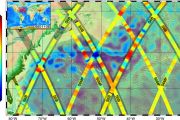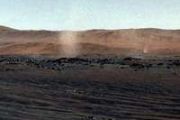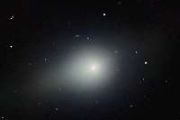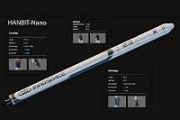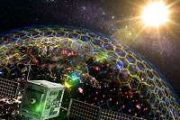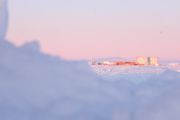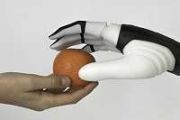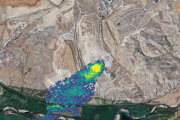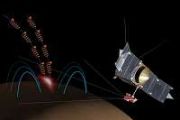
Copernical Team
NASA seeks input from potential partners on next generation astromobile
 When astronauts journey to the Moon aboard the Orion spacecraft and Space Launch System (SLS) rocket beginning with the Artemis II mission, they will travel by more traditional ground transport as they head to the launch pad to board their spacecraft.
NASA is seeking input from industry through a Request for Information on the opportunity for private companies to work with NASA and either
When astronauts journey to the Moon aboard the Orion spacecraft and Space Launch System (SLS) rocket beginning with the Artemis II mission, they will travel by more traditional ground transport as they head to the launch pad to board their spacecraft.
NASA is seeking input from industry through a Request for Information on the opportunity for private companies to work with NASA and either Tiny satellites will address sizeable questions in space science
 At NASA, "CuPID" and "CUTE" aren't just Valentine's Day buzzwords - they're the names of two satellite missions launching this fall. The Cusp Plasma Imaging Detector, or CuPID, will study the boundaries of Earth's magnetic field, to see how energy from the Sun can break through our planet's magnetic shield. The Colorado Ultraviolet Transit Experiment, or CUTE, will train its telescope on planets
At NASA, "CuPID" and "CUTE" aren't just Valentine's Day buzzwords - they're the names of two satellite missions launching this fall. The Cusp Plasma Imaging Detector, or CuPID, will study the boundaries of Earth's magnetic field, to see how energy from the Sun can break through our planet's magnetic shield. The Colorado Ultraviolet Transit Experiment, or CUTE, will train its telescope on planets China unveils gravitational-wave research center in Guangdong
 A gravitational-wave research center under the China National Space Administration (CNSA) was inaugurated on Sunday in the city of Zhuhai, in Guangdong province.
According to the CNSA, the gravitational-wave research center, located at the Zhuhai Campus of Sun Yat-sen University, will develop a series of experimental satellite platforms and payloads to promote China's space gravitational-w
A gravitational-wave research center under the China National Space Administration (CNSA) was inaugurated on Sunday in the city of Zhuhai, in Guangdong province.
According to the CNSA, the gravitational-wave research center, located at the Zhuhai Campus of Sun Yat-sen University, will develop a series of experimental satellite platforms and payloads to promote China's space gravitational-w Arkisys unveils first spacecraft element for The Port in Pasadena
 Arkisys has unveiled its first generation orbital outpost spacecraft element, the Port Module Wedge, planned for its first use on its initial Space Outpost in low earth orbit, as well as subsequent future missions and destinations.
Standing at approximately 1 meter tall and just over 1 meter wide, it is the core architectural component that defines the unique commercial-focused development
Arkisys has unveiled its first generation orbital outpost spacecraft element, the Port Module Wedge, planned for its first use on its initial Space Outpost in low earth orbit, as well as subsequent future missions and destinations.
Standing at approximately 1 meter tall and just over 1 meter wide, it is the core architectural component that defines the unique commercial-focused development University teams demonstrate 'cool' new technologies for the Moon, Mars
 Ten university teams designed and built systems intended to harvest water frozen below the surface of the Moon and Mars. The teams put their prototypes to the test during the 2021 Moon to Mars Ice and Prospecting Challenge held September 23-25 at the Hampton Roads Convention Center in Hampton, Virginia.
Taking top prize of $6,000 was the Massachusetts Institute of Technology (MIT) team fro
Ten university teams designed and built systems intended to harvest water frozen below the surface of the Moon and Mars. The teams put their prototypes to the test during the 2021 Moon to Mars Ice and Prospecting Challenge held September 23-25 at the Hampton Roads Convention Center in Hampton, Virginia.
Taking top prize of $6,000 was the Massachusetts Institute of Technology (MIT) team fro Blue Origin plans second crewed space launch from Texas
 Blue Origin plans to launch people into space for the second time from Texas on Oct. 12, carrying two businessmen and two others to be announced later.
The NS-18 mission scheduled to lift off on Blue Origin's New Shepard rocket at 9:30 a.m. EDT from the company's spaceport about 160 miles east of El Paso.
The two named crew members are Chris Boshuizen, a former NASA engineer and
Blue Origin plans to launch people into space for the second time from Texas on Oct. 12, carrying two businessmen and two others to be announced later.
The NS-18 mission scheduled to lift off on Blue Origin's New Shepard rocket at 9:30 a.m. EDT from the company's spaceport about 160 miles east of El Paso.
The two named crew members are Chris Boshuizen, a former NASA engineer and Rocket Lab wins Space Force contract to develop new rocket system
 California-based Rocket Lab has won a contract for $24.35 million from the U.S. Space Force to develop an upper stage for the company's Neutron rocket system.
The contract, announced Monday, cements the firm's commitment to becoming a launch provider for the nation's national security space program, according to a Rocket Lab news release.
The contract is part of a $75 million res
California-based Rocket Lab has won a contract for $24.35 million from the U.S. Space Force to develop an upper stage for the company's Neutron rocket system.
The contract, announced Monday, cements the firm's commitment to becoming a launch provider for the nation's national security space program, according to a Rocket Lab news release.
The contract is part of a $75 million res Mercury ahead!
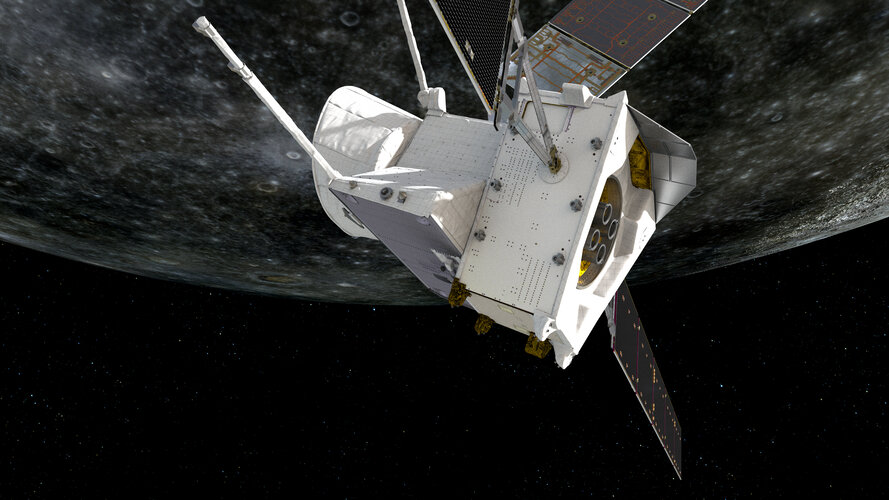
The ESA/JAXA BepiColombo mission to Mercury will make the first of six flybys of its destination planet on 1 October before entering orbit in 2025.
Asteroid sample brought back to Earth gets close-up look
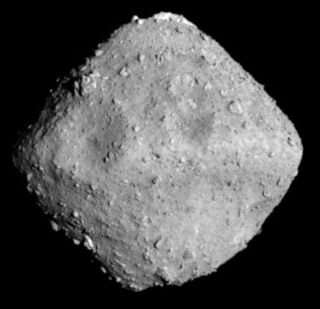
In December 2020, Japan's Hayabusa2 spacecraft swung by Earth to drop off a cache of rock samples taken from a near-Earth asteroid called Ryugu. Asteroids like Ryugu are thought to represent the ancient building blocks of the solar system, and scientists have been eager to get a closer look at the returned samples.
Last week, the Japanese Aerospace Exploration Agency shipped one of the samples—a millimeter-sized fragment from the asteroid's surface—to the laboratory of Brown University planetary scientist Ralph Milliken for analysis. Milliken's lab is one of the first in the U.S. to examine a Ryugu sample so far.
Milliken and Takahiro Hiroi, a senior research scientist at Brown, are members of the Hayabusa2 mission's science team.
Hughes conducts multi-orbit demonstration for resilient, secure UAV connectivity
 Hughes Network Systems, LLC (HUGHES) and SES has announced the successful first demonstration of a new multi-orbit satellite communications capability for remotely piloted aircraft. Conducted for General Atomics Aeronautical Systems, Inc. (GA-ASI), the demonstration paired Hughes HM series software-defined modems and Resource Management System (RMS) with SES's satellites that operate in geosynch
Hughes Network Systems, LLC (HUGHES) and SES has announced the successful first demonstration of a new multi-orbit satellite communications capability for remotely piloted aircraft. Conducted for General Atomics Aeronautical Systems, Inc. (GA-ASI), the demonstration paired Hughes HM series software-defined modems and Resource Management System (RMS) with SES's satellites that operate in geosynch 


